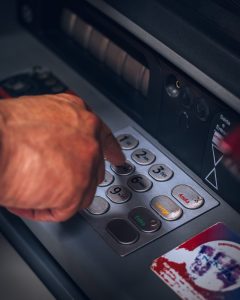Forex, or foreign exchange, trading is the process of buying and selling currencies in order to profit from changes in their value. This can be done through a dealing desk or a no dealing desk model. While both have their advantages and disadvantages, it ultimately comes down to the trader’s preferences and trading style.
What is a dealing desk?
A dealing desk is a system in which a broker acts as the counterparty to a trader’s trades. When a trader places an order, the broker fills the order from their own inventory of currencies. This means that the broker takes on the risk of the trade, and profits from the spread between the bid and ask prices.
Advantages of a dealing desk:
1. Easy access to liquidity: Since the broker is acting as the counterparty to the trade, they have access to a large pool of liquidity. This means that trades can be executed quickly and at competitive prices.
2. Fixed spreads: Dealing desk brokers typically offer fixed spreads, which means that traders know exactly how much they will pay in transaction costs. This can be particularly useful for traders who are operating on a tight budget.
3. Guaranteed execution: With a dealing desk model, trades are guaranteed to be executed, as the broker is responsible for filling the order. This can be particularly useful in volatile markets, where delays in execution can result in significant losses.
Disadvantages of a dealing desk:
1. Conflict of interest: Since the broker is acting as the counterparty to the trade, there is a potential conflict of interest. The broker may have an incentive to fill orders at less favorable prices in order to increase their profits.
2. Limited transparency: Since the broker is filling the order from their own inventory, there may be limited transparency about the actual market conditions. This can make it difficult for traders to accurately assess the true market value of the currency.
3. Slippage: In some cases, traders may experience slippage, where the price they receive is different from the price they expected. This can occur when the market moves quickly, and the broker is unable to fill the order at the expected price.
What is a no dealing desk?
A no dealing desk (NDD) model is a system in which trades are executed directly with liquidity providers, without the intervention of a broker. This means that the trader is buying and selling currencies directly from the market.
Advantages of a no dealing desk:
1. Transparency: With a no dealing desk model, trades are executed directly with liquidity providers, which means that there is greater transparency about the actual market conditions. This can help traders make more informed decisions about when to buy and sell currencies.
2. No conflict of interest: Since the broker is not acting as the counterparty to the trade, there is no potential conflict of interest. This means that traders can be confident that their trades are being executed fairly.
3. Tighter spreads: With a no dealing desk model, spreads are typically tighter than with a dealing desk model. This is because the broker is not adding their own markup to the spread, and is instead passing on the actual market spread.
Disadvantages of a no dealing desk:
1. Limited liquidity: With a no dealing desk model, liquidity may be limited, particularly during times of high volatility. This can result in delays in execution, or in some cases, the inability to execute trades at all.
2. Variable spreads: With a no dealing desk model, spreads are typically variable, which means that traders may not know exactly how much they will pay in transaction costs. This can make it difficult to accurately calculate potential profits and losses.
3. Execution risk: With a no dealing desk model, trades are not guaranteed to be executed, as the broker is not responsible for filling the order. This means that there is a greater risk of trades not being executed during times of high volatility.
Which model is better?
There is no one-size-fits-all answer to the question of which model is better. It ultimately comes down to the trader’s preferences and trading style. Some traders may prefer the greater transparency and tighter spreads offered by a no dealing desk model, while others may prefer the ease of access to liquidity and guaranteed execution provided by a dealing desk model.
Ultimately, it is important for traders to carefully consider the advantages and disadvantages of each model, and to choose the one that best fits their individual needs and trading style.






